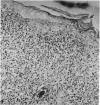Abstract
Guinea-pigs developed resistance to larvae of the ixodid tick, Dermacentor andersoni, after one infestation. Resistant hosts were characterized by allowing significantly fewer larvae to engorge than non-resistant hosts. Larvae engorging on non-resistant hosts had a mean weight six times that of larvae obtained from resistant hosts at the end of a 5-day infestation. This immunologically based resistance was previously shown to have a cell-mediated and a humoral component. In an attempt to ascertain the role of complement in the resistance response, cobra venom factor (CoF) was administered to guinea-pigs producing prolonged (85–95 per cent) depletion of complement titres. CoF was administered during an initial infestation with tick larvae to determine if complement depletion altered the acquisition of tick resistance. CoF was also administered to tick-resistant hosts in an attempt to determine if the expression of tick resistance and the development of the basophil-packed lesion, characteristic of the tick-attachment site in resistant hosts, could be altered by complement depletion. CoF did not alter the acquisition of resistance when complement levels were reduced during a primary infestation. However, complement depletion of an animal which had acquired tick resistance blocked the expression of that resistance during a challenge infestation. In addition to increased numbers and weights of larvae engorging on tick-resistant animals depleted of complement, the basophil packed lesion at the tick attachment site was greatly reduced. Complement plays an important role in the expression of tick resistance in guinea-pigs.
Full text
PDF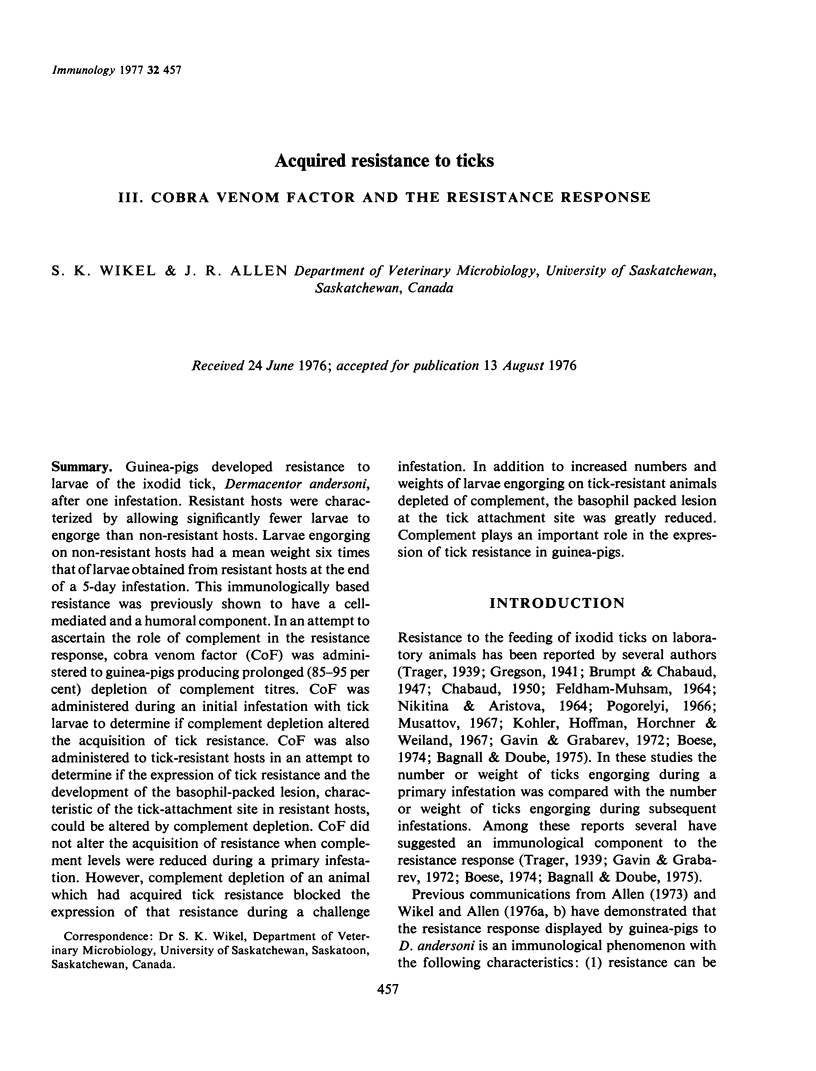
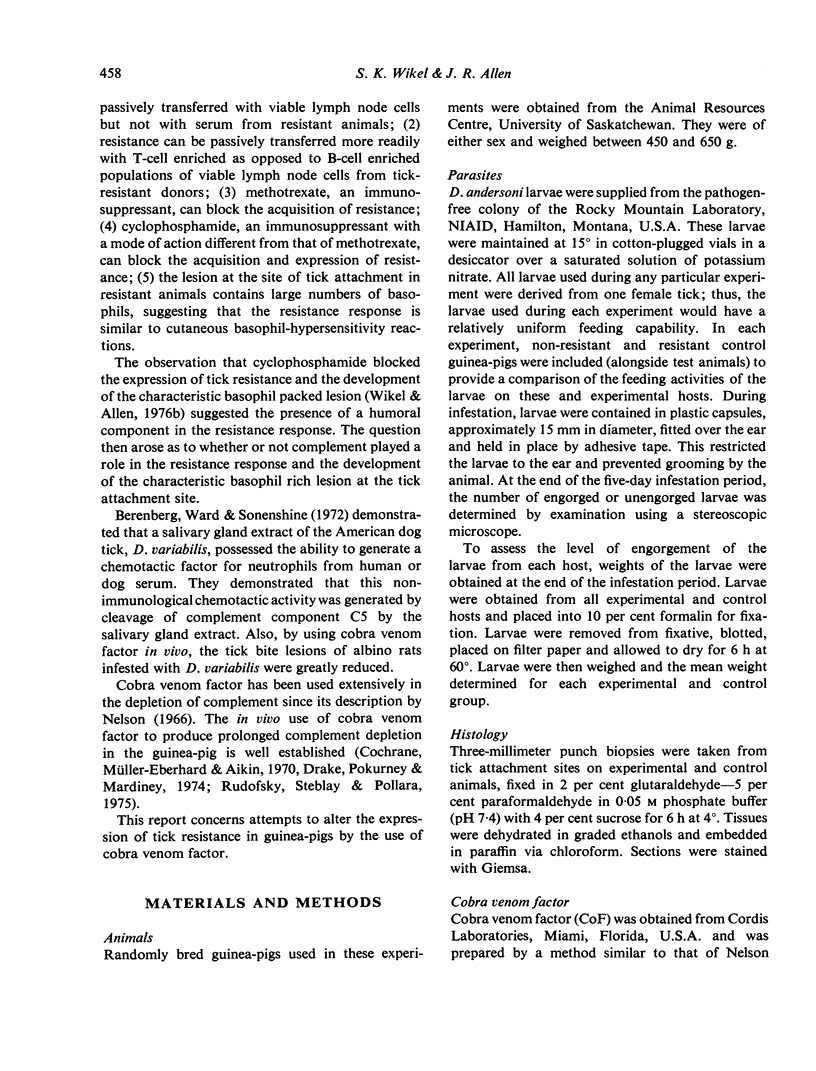
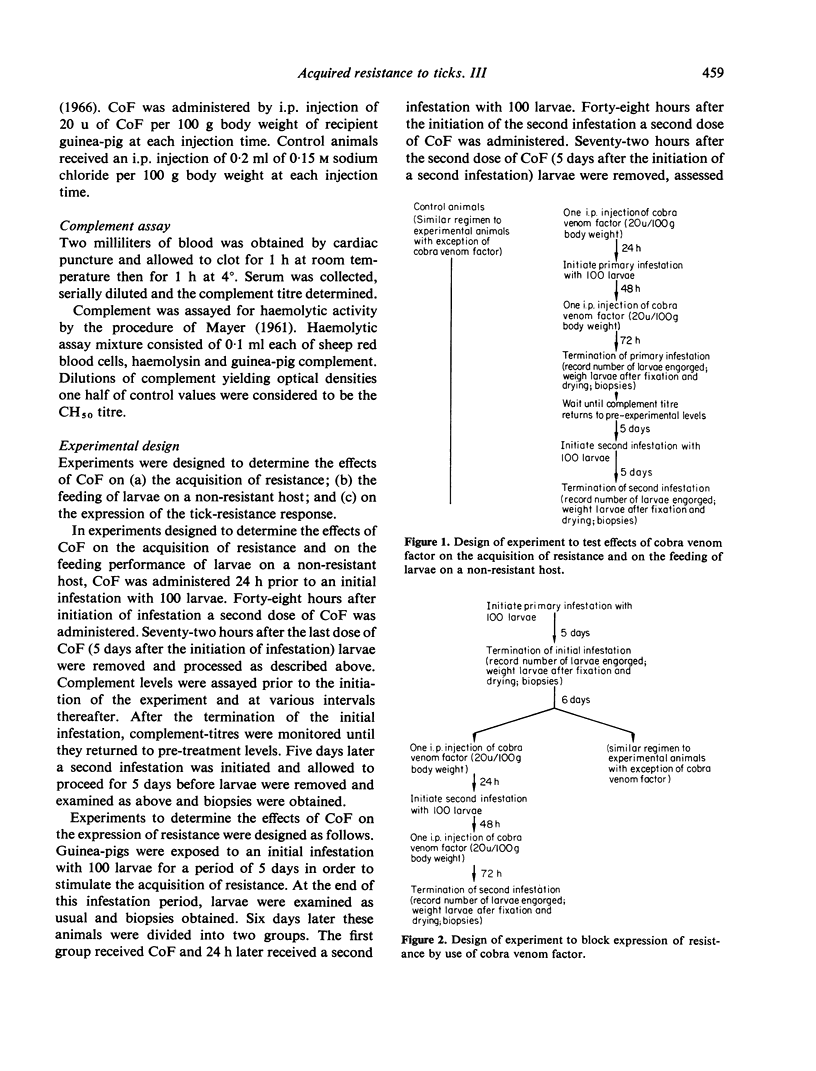
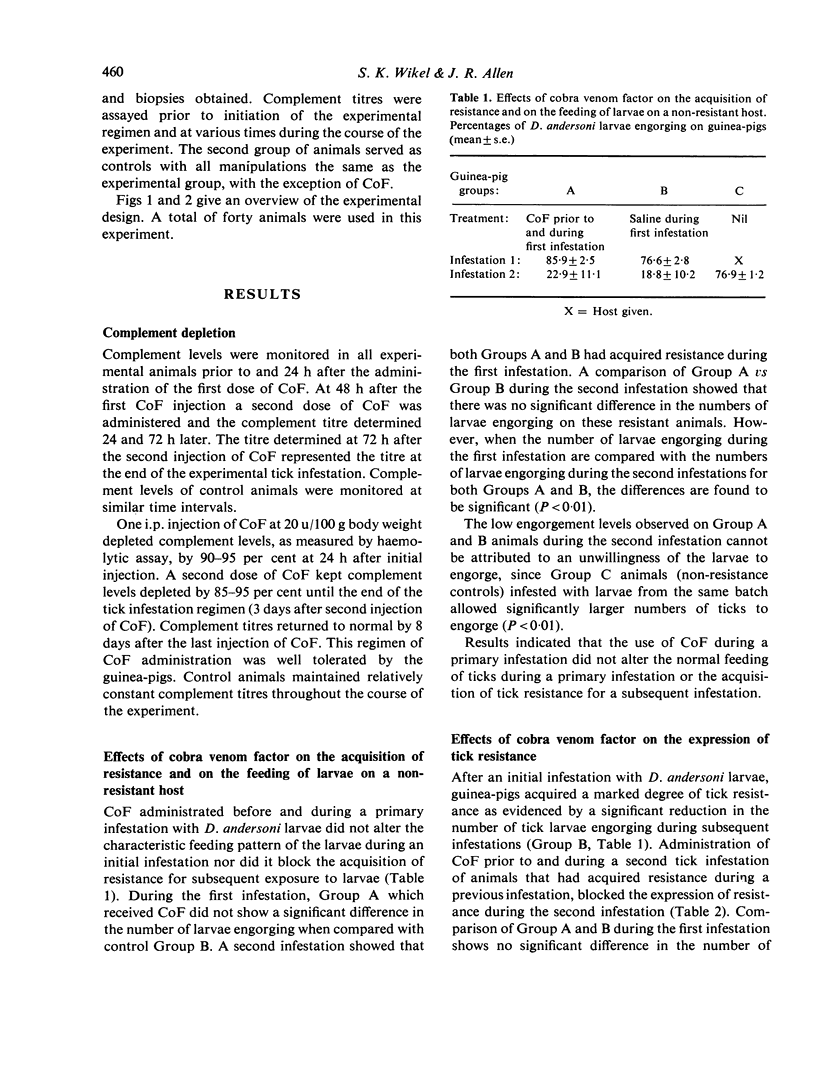
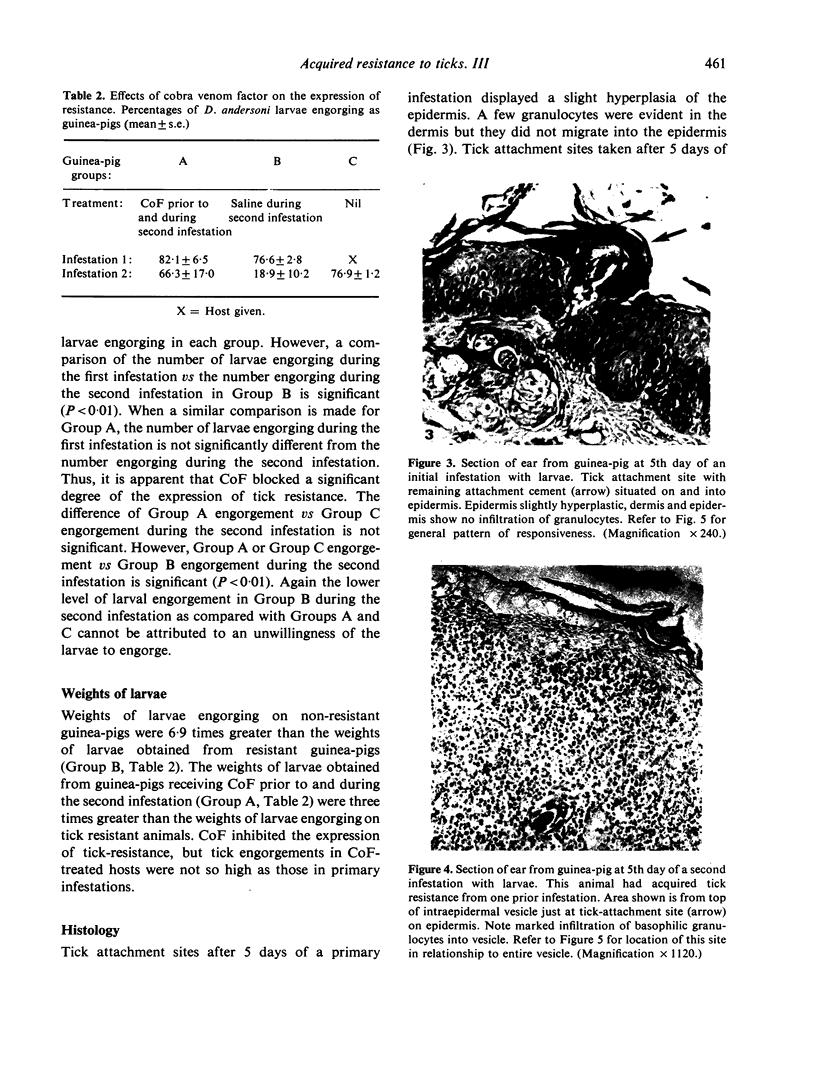
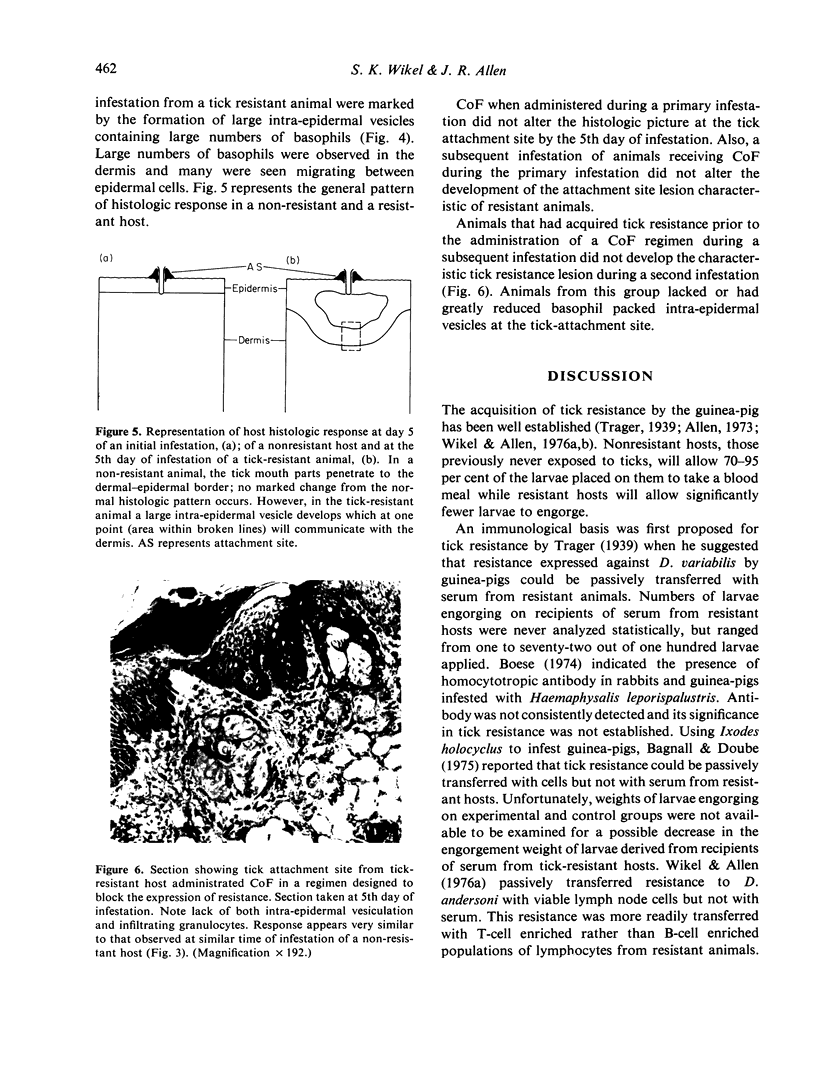
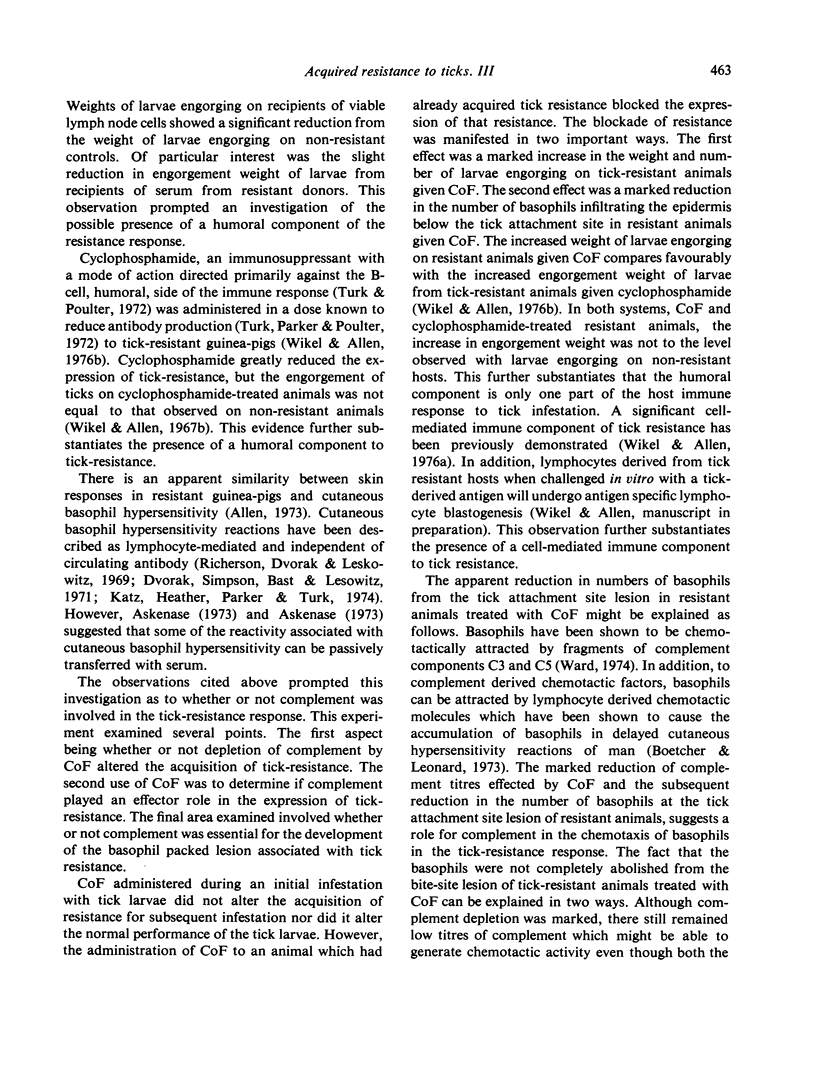
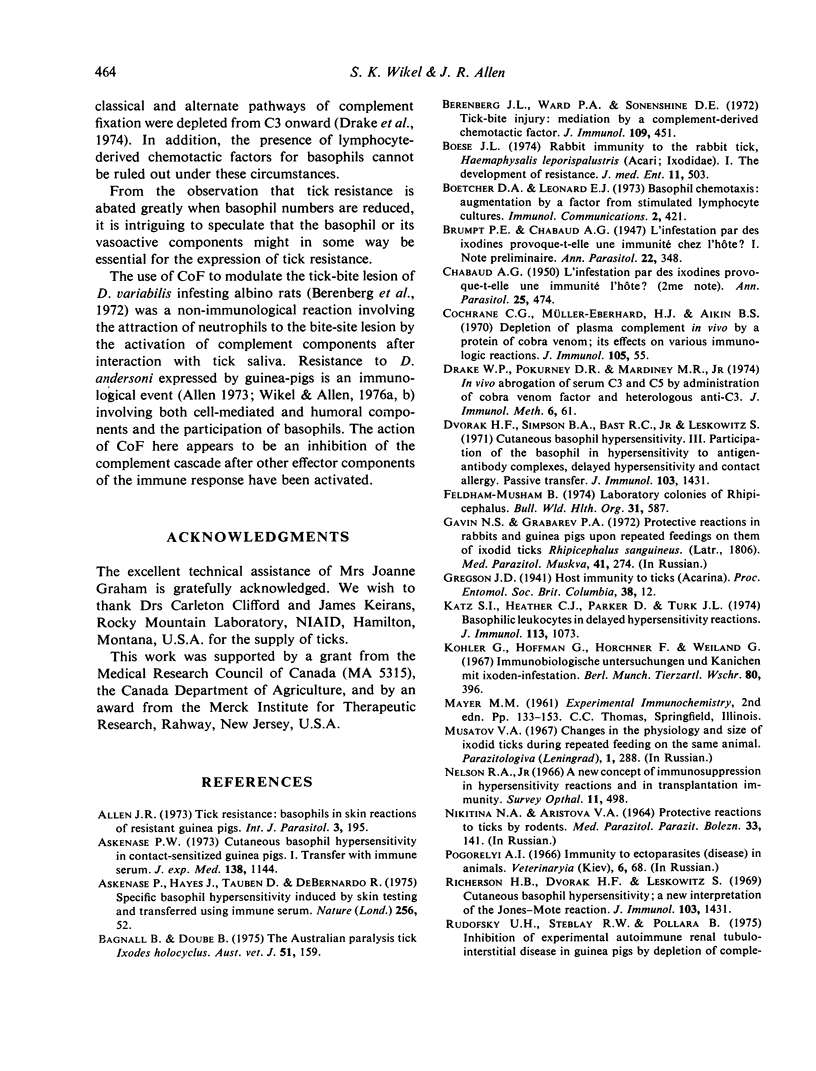
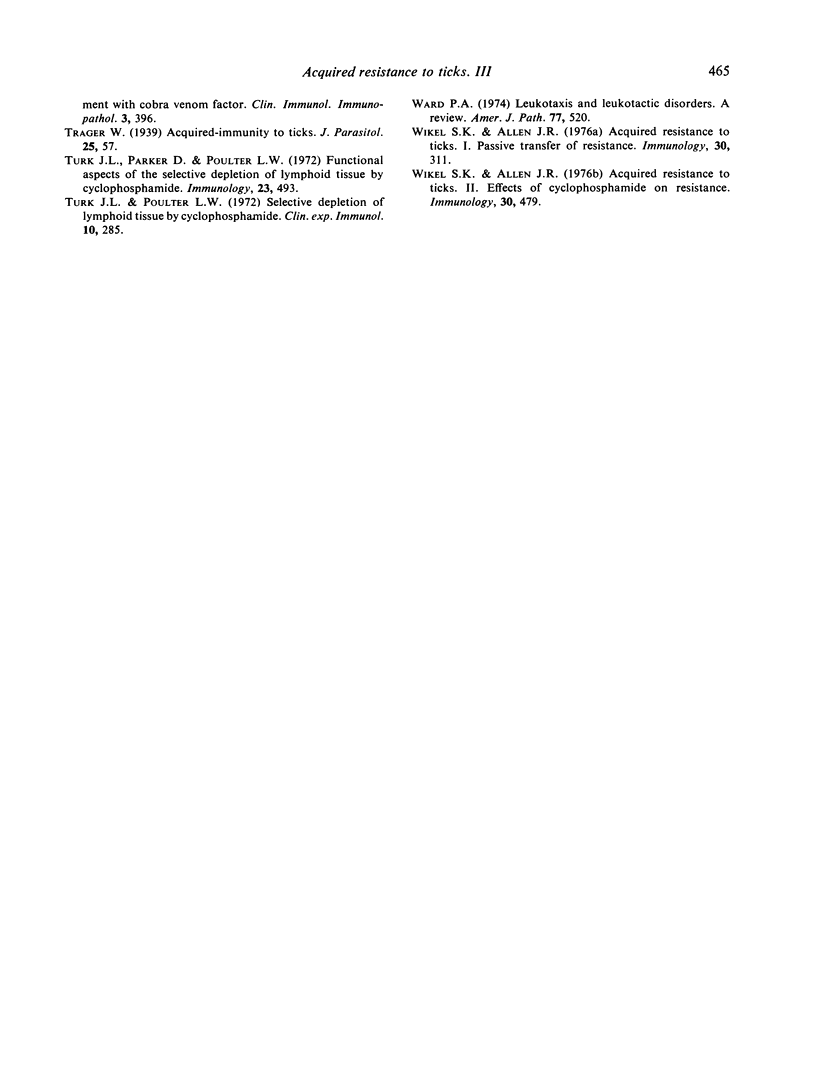
Images in this article
Selected References
These references are in PubMed. This may not be the complete list of references from this article.
- Allen J. R. Tick resistance: basophils in skin reactions of resistant guinea pigs. Int J Parasitol. 1973 Mar;3(2):195–200. doi: 10.1016/0020-7519(73)90024-6. [DOI] [PubMed] [Google Scholar]
- Askenase P. W. Cutaneous basophil hypersensitivity in contact-sensitized guinea pigs. I. Transfer with immune serum. J Exp Med. 1973 Nov 1;138(5):1144–1155. doi: 10.1084/jem.138.5.1144. [DOI] [PMC free article] [PubMed] [Google Scholar]
- Askenase P. W., Haynes J. D., Tauben D., De Bernardo R. Specific basophil hypersensitivity induced by skin testing and transferred using immune serum. Nature. 1975 Jul 3;256(5512):52–54. doi: 10.1038/256052a0. [DOI] [PubMed] [Google Scholar]
- Berenberg J. L., Ward P. A., Sonenshine D. E. Tick-bite injury: mediation by a complement-derived chemotictic chemotactic factor. J Immunol. 1972 Sep;109(3):451–456. [PubMed] [Google Scholar]
- Boese J. L. Rabbit immunity to the rabbit tick, Haemaphysalis leporispalustris (Acari: Ixodidae). I. The development of resistance. J Med Entomol. 1974 Nov 25;11(5):503–512. [PubMed] [Google Scholar]
- Boetcher D. A., Leonard E. J. Basophil chemotaxis: augmentation by a factor from stimulated lymphocyte cultures. Immunol Commun. 1973;2(4):421–429. doi: 10.3109/08820137309022813. [DOI] [PubMed] [Google Scholar]
- CHABAUD A. G. L'infestation par des ixodinés provoque-t-elle une immunité chez l'hôte? (2me note). Ann Parasitol Hum Comp. 1950;25(5-6):474–479. [PubMed] [Google Scholar]
- Cochrane C. G., Müller-Eberhard H. J., Aikin B. S. Depletion of plasma complement in vivo by a protein of cobra venom: its effect on various immunologic reactions. J Immunol. 1970 Jul;105(1):55–69. [PubMed] [Google Scholar]
- Drake W. P., Pokorney D. R., Mardiney M. R., Jr In vivo abrogation of serum C3 and C5 by administration of cobra venom factor and heterologous anti-C3. J Immunol Methods. 1974 Dec;6(1-2):61–72. doi: 10.1016/0022-1759(74)90090-8. [DOI] [PubMed] [Google Scholar]
- Katz S. I., Heather C. J., Parker D., Turk J. L. Basophilic leukocytes in delayed hypersensitivity reactions. J Immunol. 1974 Oct;113(4):1073–1078. [PubMed] [Google Scholar]
- Köhler G., Hoffman G., Hörchner F., Weiland G. Immunbiologische Untersuchungen an Kaninchen mit Ixodiden-Infestationen. Berl Munch Tierarztl Wochenschr. 1967 Oct 15;80(20):396–400. [PubMed] [Google Scholar]
- NIKITINA N. A., ARISTOVA V. A. O ZASHCHITNYKH REAKTSIIAKH K KLESHCHAM U GRYZUNOV. Med Parazitol (Mosk) 1964 Mar-Apr;33:141–144. [PubMed] [Google Scholar]
- Nelson R. A., Jr A new concept of immunosuppression in hypersensitivity reactions and in transplantation immunity. Surv Ophthalmol. 1966 Aug;11(4):498–505. [PubMed] [Google Scholar]
- Richerson H. B., Dvorak H. F., Leskowitz S. Cutaneous basophilic hypersensitivity: a new interpretation of the Jones-Mote reaction. J Immunol. 1969 Dec;103(6):1431–1434. [PubMed] [Google Scholar]
- Richerson H. B., Dvorak H. F., Leskowitz S. Cutaneous basophilic hypersensitivity: a new interpretation of the Jones-Mote reaction. J Immunol. 1969 Dec;103(6):1431–1434. [PubMed] [Google Scholar]
- Rudofsky U. H., Steblay R. W., Pollara B. Inhibition of experimental autoimmune renal tubulointerstitial disease in guinea pigs by depletion of complement with cobra venom factor. Clin Immunol Immunopathol. 1975 Jan;3(3):396–407. doi: 10.1016/0090-1229(75)90027-6. [DOI] [PubMed] [Google Scholar]
- Turk J. L., Parker D., Poulter L. W. Functional aspects of the selective depletion of lymphoid tissue by cyclophosphamide. Immunology. 1972 Oct;23(4):493–501. [PMC free article] [PubMed] [Google Scholar]
- Turk J. L., Poulter L. W. Selective depletion of lymphoid tissue by cyclophosphamide. Clin Exp Immunol. 1972 Feb;10(2):285–296. [PMC free article] [PubMed] [Google Scholar]
- Ward P. A. Leukotaxis and leukotactic disorders. A review. Am J Pathol. 1974 Dec;77(3):520–538. [PMC free article] [PubMed] [Google Scholar]
- Wikel S. K., Allen J. R. Acquired resistance to ticks. I. Passive transfer of resistance. Immunology. 1976 Mar;30(3):311–316. [PMC free article] [PubMed] [Google Scholar]
- Wikel S. K., Allen J. R. Acquired resistance to ticks. II. Effects of Cyclophosphamide on resistance. Immunology. 1976 Apr;30(4):479–484. [PMC free article] [PubMed] [Google Scholar]




